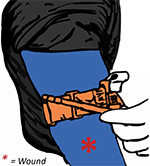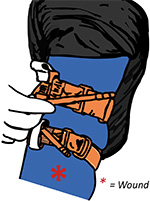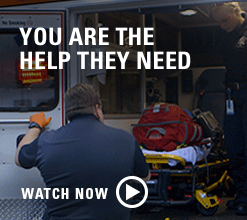Archive for the ‘MCI’ Category
London: Several pedestrians have been injured after being hit by a van as it veered off the road into worshippers leaving the Muslim Welfare House in Finsbury Park shortly after midnight.
Monday, June 19th, 2017Compressing the Zones of Care: An integrated active shooter response
Monday, October 17th, 2016Compressing the Zones of Care
The Hartford Consensus recommends that an integrated active shooter response should include the critical actions contained in the acronym THREAT:
- Threat suppression
- Hemorrhage control
- Rapid Extrication to safety
- Assessment by medical providers
- Transport to definitive care
A key component of the Hartford Consensus is this:
In the immediate aftermath of a mass casualty event, some lives may be lost through caution. The standard approach has been to cordon off the zone of casualties, a wide “hot zone,” until it’s been ensured that all threats are suppressed. The Hartford Consensus suggested that the plan be modified to allow earlier access to victims outside the real hot zone, the location of the active shooter, or a possible bomb. Thus, agreement on new systems of integration and coordination between law enforcement and other teams of responders is needed to ensure the mutual understanding and sequencing of roles.*
By compressing the “hot zone” with the two other zones of care, the “warm zone” and the “cold zone,” less time is lost and more time is made available to begin bleeding control techniques so that more lives are saved (see diagram below).
—
*Source: The Hartford Consensus. Improving Survival Strategies to Enhance Survival in Active Shooter and Intentional Mass Casualty Events:A Compendium. Published by American College of Surgeons, September 2015.
https://www.facs.org/~/media/files/publications/bulletin/hartford%20consensus%20compendium.ashx. Retrieved July 25, 2016.
The “Stop the Bleed” Program
Tuesday, June 14th, 2016https://www.youtube.com/watch?v=IbQF_dqRH6w
Stop the Bleed

No matter how rapid the arrival of professional emergency responders, bystanders will always be first on the scene. A person who is bleeding can die from blood loss within five minutes, therefore it is important to quickly stop the blood loss.
“Stop the Bleed” is a nationwide campaign to empower individuals to act quickly and save lives.
Remember to be aware of your surroundings and move yourself and the injured person to safety, if necessary.
Call 911.
Bystanders can take simple steps to keep the injured person alive until appropriate medical care is available. Here are three actions you can take to help save a life:
Compress

Find where the bleeding is coming from and apply firm, steady pressure to the bleeding site with bandages or clothing
Tourniquet

If the bleeding doesn’t stop, place a tourniquet 2-3 inches closer to the torso from the bleeding. (The tourniquet may be applied and secured over clothing.)
Pull the strap through the buckle, twist the rod tightly, clip and secure the rod with the clasp or the Velcro strap.
Compress Again

If the bleeding still doesn’t stop, place a second tourniquet closer to the torso from the first tourniquet.
Pull the strap through the buckle, twist the rod tightly, clip and secure the rod with the clasp or the Velcro strap.
* One type of tourniquet is depicted in the illustrations.
More Information
You can learn more about how to “Stop the Bleed” and help save a life by accessing these training and resources:
- Download the steps above as a shareable infographic (229 KB JPG)
- Download a high resolution copy of the “Stop the Bleed” logo (152 KB JPG)
- NAEMT Bleeding Control for the Injured
- Army Combat Casualty Care Research Program
To learn more or to get involved in the Stop the Bleed Campaign, contact us at stopthebleed@hq.dhs.gov.




